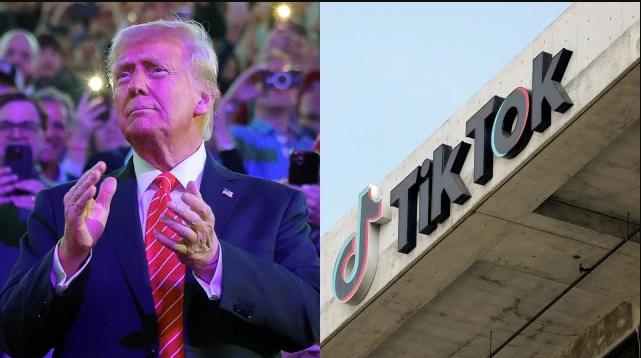TikTok’s Tumultuous Journey- From Ban to Potential Revival under Trump
TikTok’s Roller Coaster Ride in the U.S.
In a remarkable twist of fate, former U.S. President Donald Trump, the very architect of TikTok’s tumultuous journey in America, may now become its unexpected savior. The saga of TikTok in the United States is a story of executive orders, national security concerns, and shifting political landscapes—one that encapsulates the volatile nature of U.S.-China relations and the unpredictability of Trump’s political maneuvers.
The Beginnings of the Conflict
It all began in August 2020 when Trump invoked his emergency economic powers to issue an executive order that sought to ban TikTok, citing national security risks. The administration argued that the Chinese government’s access to user data via ByteDance, TikTok’s parent company, posed a threat to American citizens’ privacy and national interests. This marked the start of a long and contentious legal battle, with TikTok users, ByteDance, and U.S. legislators at odds over the potential ban and the legal grounds for such action.
Trump’s move set in motion a series of events, including negotiations with American tech giants like Oracle and Walmart, which initially aimed to broker a deal to separate TikTok’s U.S. operations from its Chinese parent company. However, this deal eventually faltered, and the platform’s fate remained uncertain as Trump’s tenure came to an end in 2021.
A Shift in Tone and Policy
Fast forward to January 2025, and Trump, now President-elect, made headlines once again with a surprising announcement: he intended to issue a new executive order that would extend TikTok’s operations in the U.S. for a period of time. This new order would give ByteDance more time to negotiate a deal to divest TikTok’s American arm to an approved buyer before a permanent ban would take effect. Trump, once the architect of the app’s troubles in the U.S., had taken a strikingly different approach.
“I believe TikTok has become too ingrained in American culture to lose,” Trump said in a rally just hours before his inauguration. “Frankly, we have no choice. We have to save it.” The former president’s comments signaled a shift toward pragmatism, acknowledging TikTok’s massive popularity among American users, including millions of young people who have built careers and communities on the platform.
The Immediate Impact of the Ban
On the morning of January 19, 2025, millions of American TikTok users were met with the shocking news that the app was no longer accessible. Google and Apple had removed TikTok from their respective app stores, following a newly enacted federal law triggered by Trump’s 2020 executive order. The law, which had been passed with broad bipartisan support in Congress in April 2024, required ByteDance to sell its U.S. operations by January 19, or face the risk of a permanent ban due to national security concerns.
In response, TikTok announced that it was working diligently to comply with the new directives, but the sudden removal of the app sent waves of confusion and frustration through its American user base. The law, upheld by the U.S. Supreme Court just days earlier, added fuel to an already tense situation, with questions surrounding the legality of such an unprecedented move and its broader implications for free speech in the digital age.
The U.S.-China Tensions and Trump’s Diplomacy
The TikTok ban came at a particularly delicate moment in U.S.-China relations. Trump, who had previously imposed tariffs on Chinese goods and engaged in an escalating trade war, now found himself advocating for a softer approach to Beijing. Trump’s recent statements signaled his desire to reopen channels of communication with Chinese leadership, including the historic invitation of Chinese Vice President Han Zheng to attend Trump’s inauguration. This marked the first time in history that a senior Chinese official had participated in such an event.
Critics of Trump’s policy towards TikTok argue that it was driven more by geopolitical rivalry than legitimate security concerns. The Chinese government, for its part, condemned the ban, accusing the U.S. of using unfair state power to suppress a Chinese company. A spokesperson from China’s Ministry of Foreign Affairs stated. China will take all required actions to firmly protect its rightful interests and entitlements.
The Path Forward: Potential Deals and Future Negotiations
As Trump takes office for his second term, new negotiations are already underway regarding TikTok’s future in the U.S. Media reports suggest that Beijing has engaged in talks with potential buyers, including tech mogul Elon Musk, who has long been a Trump ally. However, these discussions remain shrouded in uncertainty, with ByteDance repeatedly denying reports of any formal sale.
One of the more intriguing developments is the involvement of smaller companies, such as the AI startup Perplexity AI, which reportedly made a bid to merge with TikTok’s U.S. operations. While it remains to be seen whether these negotiations will lead to a definitive solution, it is clear that the TikTok saga is far from over.
The Broader Implications
The TikTok controversy highlights broader issues surrounding data privacy, the power of tech giants, and the role of government in regulating digital platforms. As the legal battles continue to unfold, the question of who controls access to digital spaces—and how governments can influence these spaces—will likely shape future policies in the U.S. and abroad.
Trump’s decision to reconsider the ban and open up the possibility of a resolution reflects the complex and ever-evolving nature of global digital politics. As TikTok’s fate hangs in the balance, one thing is certain: the platform’s future in the U.S. will continue to be influenced by political, economic, and strategic interests for years to come.
Also Read:-
Bigg Boss 18 Winner: Karan Veer Mehra becomes the winner of season 18, wins the glittering trophy
Nothing Phone 3- A Revolution in Smartphone Design and Technology
